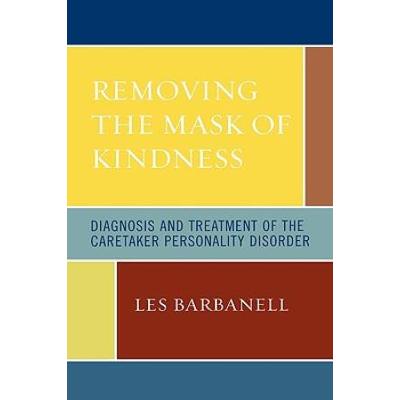BIPOLAR DISORDER TREATMENT
Bipolar disorder can look very different in different people. The symptoms vary widely in their pattern, severity, and frequency. Some people are more prone to either mania or depression, while others alternate equally between the two types of episodes. Some have frequent mood disruptions, while others experience only a few over a lifetime.
There are four types of mood episodes in bipolar disorder: mania, hypomania, depression, and mixed episodes. Each type of bipolar disorder mood episode has a unique set of symptoms.
Signs and symptoms of a mixed episode. A mixed episode of bipolar disorder features symptoms of both mania or hypomania and depression. Common signs of a mixed episode include depression combined with agitation, irritability, anxiety, insomnia, distractibility, and racing thoughts.
What is bipolar disorder?
Bipolar disorder (also known as manic depression) causes serious shifts in mood, energy, thinking, and behavior—from the highs of mania on one extreme, to the lows of depression on the other. More than just a fleeting good or bad mood, the cycles of bipolar disorder last for days, weeks, or months. And unlike ordinary mood swings, the mood changes of bipolar disorder are so intense that they interfere with your ability to function.
During a manic episode, a person might impulsively quit a job, charge up huge amounts on credit cards, or feel rested after sleeping two hours. During a depressive episode, the same person might be too tired to get out of bed, and full of self-loathing and hopelessness over being unemployed and in debt.
The causes of bipolar disorder aren’t completely understood, but it often appears to be hereditary. The first manic or depressive episode of bipolar disorder usually occurs in the teenage years or early adulthood. The symptoms can be subtle and confusing; many people with bipolar disorder are overlooked or misdiagnosed—resulting in unnecessary suffering. But with proper treatment and support, you can lead a rich and fulfilling life.
Symptoms & Types
Bipolar is a complex illness. There are many different symptoms and several different types of bipolar disorder. The primary symptoms of the disorder are dramatic and unpredictable mood swings. The various types of bipolar disorder range from mild to severe.
Symptoms
- Bipolar Symptoms
The primary symptoms of bipolar disorder are dramatic and unpredictable mood swings.
- Mania Symptoms
Mania symptoms may include excessive happiness, excitement, irritability, restlessness, increased energy, less need for sleep, racing thoughts, high sex drive, and a tendency to make grand and unattainable plans.
- Depression Symptoms
Depression symptoms may include sadness, anxiety, irritability, loss of energy, uncontrollable crying, change in appetite causing weight reduction or gain, increased need for sleep, difficulty making decisions, and thoughts of death or suicide.
Types
- Bipolar Types
There are several types of bipolar disorder; all involve episodes of depression and mania to a degree. They include bipolar I, bipolar II, cyclothymic disorder, mixed bipolar, and rapid-cycling bipolar disorder.
- Bipolar I
A person affected by bipolar I disorder has had at least one manic episode in his or her life. A manic episode is a period of abnormally elevated mood, accompanied by abnormal behavior that disrupts life.
- Bipolar II
Bipolar II is similar to bipolar I disorder, with moods cycling between high and low over time. However, in bipolar II disorder, the “up” moods never reach full-on mania.
- Rapid Cycling
In rapid cycling, a person with bipolar disorder experiences four or more episodes of mania or depression in one year. About 10% to 20% of people with bipolar disorder have rapid cycling.
- Mixed Bipolar
In most forms of bipolar disorder, moods alternate between elevated and depressed over time. But with mixed bipolar disorder, a person experiences both mania and depression simultaneously or in rapid sequence.
- Cyclothymia
Cyclothymia (cyclothymic disorder) is a relatively mild mood disorder. People with cyclothymic disorder have milder symptoms than in full-blown bipolar disorder.
Top Signs You Might Be Bipolar
- Bipolar Sign 1: Abnormal or Excessive Elation or Energy
Mania is more than simply feeling good or euphoric. During manic episodes people can be described as being frantic, hyperactive or over-excited.
- Bipolar Sign 2: Racing Thoughts and Speech
Oftentimes a person’s thoughts and speech are so fast during manic episodes that their speech gets pressured, loud and hard to understand. These racing thoughts make it difficult to concentrate on any one thing at a time and are often broken up into fragmented tangents during speech.
- Bipolar Sign 3: Grandiose Thinking
Grandiosity is a term used to describe an exaggerated sense of one’s importance, power, identity or knowledge. During a manic episode, a person may have grandiose notions, such as that they are better at something than they really are or that they can accomplish a difficult or series of tasks in a very short period of time. This can cause people with bipolar disorder to be become involved in excessive planning and start multiple activities that they never end up finishing. These grandiose ideas often lead individuals to engage in things such as impulsive spending sprees, reckless driving, and foolish financial investments.
- Bipolar Sign 4: Decreased Need for Sleep
During a manic episode, a person will usually wake up several hours earlier than normal and feel full of energy, despite having less sleep. Sometimes the sleep disturbance is so severe that the person may go for days without sleep without feeling tired.













